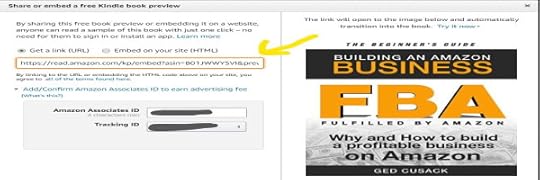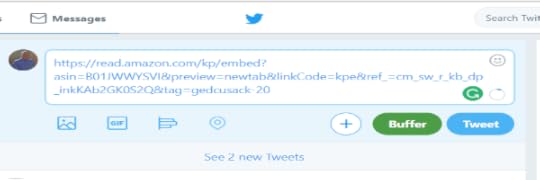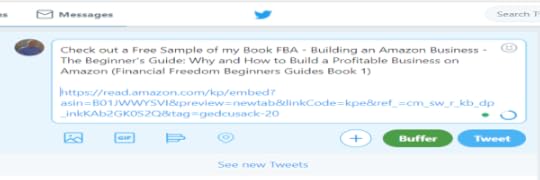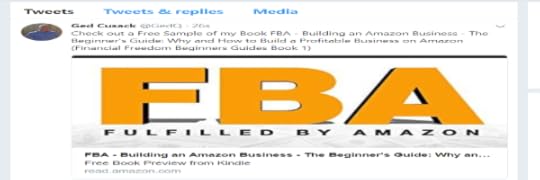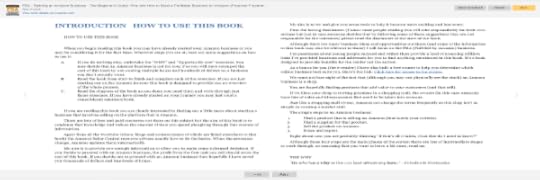Ged Cusack's Blog
March 26, 2018
3 Simple Tips to Reduce ACOS on Your Amazon Book Ads
 What is ACOS?
What is ACOS?When you review your Amazon Book Ad, you will see that the title of one column on your report is ACOS.
The ACOS refers to the “Advertising Cost of Sales” or “Average Cost of Sales” in relation to your AD campaign (and is expressed as a percentage).
Example:
For an Ad campaign expenditure of $10 that generates $100.
ACOS = $10 (expenditure) ÷ $100 (the value of the sales) x 100 (to create a percentage) = 10%
NB. For the purpose of simplicity, I will only be referring to Amazon sponsored Ads in this post.
1. Know Your Profit Margins
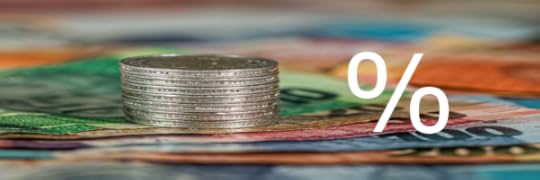 When you look at your ACOS, it is important that you realize that the sales revenue and the potential profits (or book royalties) are not the same things.
When you look at your ACOS, it is important that you realize that the sales revenue and the potential profits (or book royalties) are not the same things.
The Sales Revenue is what Amazon receives for your book and the royalties (your profits) are what Amazon actually pays you from the sale of your book.
For simplicity let’s assume that you are running an Ad campaign, and for each $8 you spend on your ad you achieve $10 in book sales. We will also assume that Amazon is paying you 70% of the books sales revenue as royalties.
That gives you an ACOS of $8 (expenditure) ÷ $10 (the value of the sales ) x 100 (to create a percentage) = 80%
If you looked at only those figures, with an ACOS of 80% it would seem that you are making 20% profit on your Ads.
In reality, If you only receive $7 (70% of the books Sales revenue) that changes your costs to $8 (expenditure) ÷ $7 (the amount Amazon pays you ) x 100 (to create a percentage) = 114%
If the Advertising cost is 114% of the value of the income that you are receiving, you are clearly operating at a loss.
What is a Profitable ACOS
Knowing that an ACOS percentage of less than 100% doesn’t mean that we are actually making money, we need a better idea of what a profitable ACOS is.
The main place to start is the break-even point for your ACOS. This is where the income generated by your book sales covers the cost of your Ads.
Assuming that your Royalty rate for your Target Ad market is 70% then your ACOS break-even point should be 70%.
Given an ACOS of $7 (expenditure) ÷ $10 (the Value of the sales ) x 100 (to create a percentage) = 70%
In reality, If you only receive $7 (70% of the books Sales revenue) that changes your ratio to of $7 (expenditure) ÷ $7 (the amount Amazon pays you ) x 100 (to create a percentage) = 100%
If you are spending 100% of our profits on Ad campaigns you are at break even.
I understand that there may be tax retentions from Amazon and other costs not factored into your royalty payments. The main point to understand here is that if your ACOS is over 70% you are not even achieving break-even.
Your own business plan and your Cashflow situation will mean that only you can determine, what return you want from your book Ads. Whatever your target ACOS you definitely need to know when an Ad is costing you money.
2. Choose the Correct Keyword Bid Price
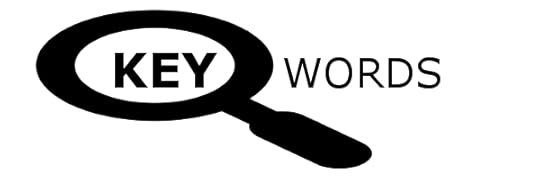 When you start an Amazon Book Ad based on Keyword searches, you are in effect entering into an auction scenario.
When you start an Amazon Book Ad based on Keyword searches, you are in effect entering into an auction scenario.
CPC
The price that you bid for your keyword is known as the Cost Per Click (CPC) and can determine if your Ad is actually displayed, or not.
If three authors are running an Ad using the Keyword “Thriller”:
Author A bids $0.10 a click for this Keyword.
Author B bids $0.20 a click for this Keyword.
Author C bids $0.80 a click for this Keyword.
Author C wins the bid and their Ad can be displayed on Amazons sales page, whenever someone types in the word Thriller in an Amazon search.
The model for these Keyword Ads is referred to as Pay Per Click (PPC), this means that you as the advertiser only pay when someone clicks on your Ad.
It might seem great that author C has an Ad that people will see, but the fact that they will be charged $0.80 for every click on that Ad may mean it’s not profitable.
Conversion Rates
For Amazon book Ads when we refer to the conversion rate, we mean the number of buyer clicks that convert into actual book sales.
e.g. if only one person buys a book from every ten people who click on your book Ad, the conversion rate is 10%.
As you still pay your bid price for each click, this is why it is important to set your bid price correctly.
Author A bids $0.10 at 10% conversion rate they need 10 clicks for a sale, so a sale costs them (10 x $0.10) $1.00
Author B bids $0.20 at 10% conversion rate they need 10 clicks for a sale, so a sale costs them (10 x $0.20) $2.00
Author C bids $0.80 conversion rate they need 10 clicks for a sale, so a sale costs them (10 x $0.80) $8.00
If we assume the same royalty profits (in the above section on profit margins) of $7 a sale.
Author C is winning the Bid and displaying their Ad but it is not profitable as it costs $8 for every $7 of royalties (or profits).
Although the bid price is important, you should also look at ways to optimize your conversion rates.
Ensuring that you have a great book cover, title, content and a great book listing will help increase conversion rates.
Don’t Accept Amazon’s Default Bid
When you start an Amazon Ad campaign based on keywords, Amazon has an initial default setting Bid for the keywords, you do not need to accept this bid.
Amazon will also offer suggested bids for a word. If the suggested bid seems extortionate, look for alternative words.
Start with a lower bid of around $0.10 a click and increase it as required.
If you add words during a live Ad campaign, be aware that the default bid will still be set, whatever your current CPC bid is for other keywords.
3. Set a Budget and Be Patient
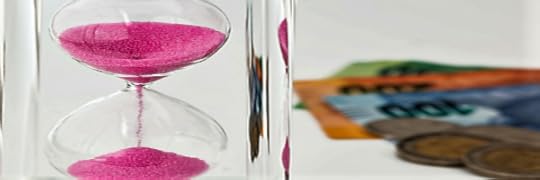 The minimum budget that the Amazon KDP system allows per Ad campaign is $100.
The minimum budget that the Amazon KDP system allows per Ad campaign is $100.
If $100 seems a bit expensive, it should be noted that you don’t have to spend the full amount.
If your available advertising budget is less than $100, set the Ad budget to the minimum $100, but ensure that you know what your true budget is.
“Pause” or “Terminate” your Ad (in the Ad campaign settings), when it reaches the limit of your true budget.
Ways to ensure that your Ad expenditure doesn’t reach $100:
Set the Campaign over a longer period (e.g. three months).
Set the CPC bid at a lower level.
Set the Pacing of the Campaign to “Spread campaign evenly over its duration.
Run one initial Ad campaign and hone your skills before trying multiple campaigns.
During the first week of your Ad campaign, the ACOS may look terrible, you need to monitor it but also give it time to gain some traction.
Review your campaign weekly and look for improvements. Don’t panic and stop a campaign just because week ones results are bad.
Wrapping Up With ACOS
You should now have a better idea of what ACOS is and how to make the most of it, in your Amazon book advertising campaigns.
The simple concept of revenue over profits can elude businesses and cause them to fail.
As an author looking to make money from your writing, you should now understand this concept better.
Experiment with your first campaign and learn the tricks of the trade before trying to explore multiple campaigns.
The post 3 Simple Tips to Reduce ACOS on Your Amazon Book Ads appeared first on Ged & Book Marketing.
March 15, 2018
Do Indie Authors Need To Own ISBNS?
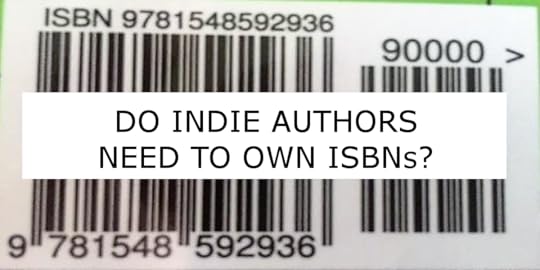 An ISBN (International Standard Book Number) is a unique number that is used to identify a book or book-like product for commercial use. Formerly a 10 digit number, it changed to a 13 digit system in 2007.
An ISBN (International Standard Book Number) is a unique number that is used to identify a book or book-like product for commercial use. Formerly a 10 digit number, it changed to a 13 digit system in 2007.
If you look on the back of any book, you should see a box with a barcode (and the ISBN written above the barcode).
The ISBN does not just identify a specific book but also identifies specific details about that book. Different formats or editions of the same book can have a separate ISBN, e.g. the hardback version of a book will have a different ISBN to the paperback version of the same book.
Why Do You Need An ISBN?
The primary purpose of the ISBN for a book, is so that anyone can identify the exact edition and format of that book.
If you want to sell print versions of your books through bookstores (either online or physically), your book needs an ISBN.
If you want your print book to be stocked by libraries, your book needs an ISBN.
There may be several books out there with the same name (by different authors) or you may even have different versions of your own book available. Every book (and version/format of it) needs to have a unique way for it to be identified.
Some digital versions of your book do not require an ISBN and we will discuss that below.
Where Do You Get An ISBN?
Although all ISBNs are registered with the International ISBN agency. Publishers need to apply to their national ISBN Agency to get an ISBN. In the US purchases are usually done through “Bowker.com”.
A publisher will normally buy an allocation of ISBN numbers that they can then use for the various authors that they service. At the time of my writing, here are the approximate costs for ISBNs in the USA.
A single ISBN = $125
A block of 10 = $250
A block of 100 = $575
A block of 10000 = $1000
You’ll see from the prices above that it is more cost effective to buy in bulk, but as an independent author, you may not want to incur this initial cost when you first self-publish.
The ISBN of a book is owned by and designates the publisher of a book. Although purchasing an ISBN may not be in your initial budget, as an independent author, you want to retain as much ownership as possible of your work.
Do Digital Books Need An ISBN?
If for some reason you are only going to publish your book as a digital version, you may not need an ISBN. Having an ISBN may be seen as giving your eBook more credibility by some, but it is not essential.
For Amazons Kindle Version of your book, they use their ASIN (basically Amazon Catalogue number) to track your book.
For Kobo writing Life, they assign your eBook a tracking number through their system. This allows you to distribute your book to over 190 countries but the lack of an ISBN can limit distribution through some of their partner sites (such as WH Smith), according to Kobo’s website.
If you are distributing your book through Ingram Sparks, even the digital version will require an ISBN.
When you are allocating ISBN’s to a digital book, remember that an ISBN refers to format. You would need a separate ISBN for the Epub, Mobi and PDF version of your book.
What Are Your ISBN Options With Createspace?
As Createspace is usually one of the first options for indie authors, I thought it prudent to include a section on this publisher.
Createspace is a publisher but also a channel to the Amazon bookstore so your book does need an ISBN when published through Createspace.
Createspace provides several options for ISBNs (including a FREE Option).
1. If you choose the “Assigned” Option when publishing through Createspace, the cost is Free but comes with the least flexibility:
You cannot use the same ISBN to print your book through another publisher such as Ingram sparks.
Although it might seem unfair that Createspace keeps ownership of the ISBN, they purchased it initially and because you chose to use their ISBN, for FREE, you accept this as part of the deal.
2. If you choose the “Provide your Own ISBN” option when publishing through Createspace, the cost is whatever you have paid for your ISBN.
If this is not your first book, you may already own a batch of ISBNs.
By using your own ISBN, you are listed as the publisher and you can keep this ISBN if you choose to leave Createspace for another publisher.
N.B. If you are using your own ISBN for publishing through Createspace make sure that the book’s imprint name matches what is registered with your ISBN (if you registered your name under an LLC, don’t put your personal name as the publisher on Createspace).
3. If you choose the “Universal ISBN” option when publishing through Createspace, the cost is $99. This is similar to providing your own ISBN but Createspace has actually bought the ISBN for you.
Using this option you are also listed as the publisher and you can keep this ISBN if you choose to leave Createspace for another publisher.
One of the benefits here is that it may be cheaper than buying a single ISBN yourself.
With this option, Createspace has integrated the ISBN purchase into their publishing process. This can be appealing when first starting out.
When Should You Own An ISBN?
A lot of Indie authors start out publishing exclusively through Amazon and Createspace (or KDP Print on demand).
Historically authors have not always been concerned with their long-term publishing careers. Some traditional publishers have tied up Authors licensing rights for long periods of time. Even in today’s digital world, some of the early agreements with the likes of audible.com have provided the author limited flexibility.
As independent authors, you want to be in control of your books, and as FREE ISBNs are not owned by you, part of your long-term plan should be to your own ISBN’s
If you are going to self-publish your books through the likes of Ingram sparks, you will need an ISBN to publish.
Purchasing your own ISBNs at the start of your publishing journey may not be possible (due to your budget etc.).
If you intend to have a long-term career as an indie author you should include ownership of your own ISBNs as one of the early expenditures of your publishing plan.
N.B. If you originally published your book through a traditional publisher and you have had your book’s rights reverted to you, don’t keep the ISBN. If they offer to let you keep your ISBN, you are responsible for any returns associated with that book and this can be an unforeseen cost. 'Indie' Authors Should Own Their ISBN
Click To Tweet
When Do You Need To Change The ISBN For Your Book?
Once you have published your book, you may want to make some changes to the content or the formats of your book.
As an ISBN is a unique identifier for the details of your specific book, you may need a new ISBN:
If you make substantial changes to your book (e.g. add a new chapter, foreword or appendix) or you create a second edition with new material, it should have a new ISBN.
If you change the title of your book, it must have a new ISBN.
If you bring out a different language version of the same book, it must have a new ISBN.
If you change the price of your book, you do not need a new ISBN.
If you change the cover of your book, you don’t need a new ISBN unless it substantially changes the book. (This refers to the reader’s experience, if your previous cover was raved about and your new cover is thought to be a disappointment to the readers, you may need a new ISBN).
The reasons that you should change your ISBN are not all listed above. The main point of the ISBN is to ensure that someone buying your book gets the book in the relevant format and condition that they expect it. If you do something irrational like changing the language of your book but don’t change the ISBN, you will have a lot of unhappy readers.
Footnotes
The information in this post should have helped you identify if and when you need to own your own ISBN. It is ultimately your choice and needs to tie in with your publishing strategy.
Although cost may be a factor in acquiring your own ISBN, It should be noted that some countries (such as Canada and New Zealand) provide FREE ISBNs to their citizens. They look at creating books as a cultural activity.
The post Do Indie Authors Need To Own ISBNS? appeared first on "Author Ged" & His Book Marketing Services.
March 13, 2018
7 Simple Techniques to Combat Impostor Syndrome
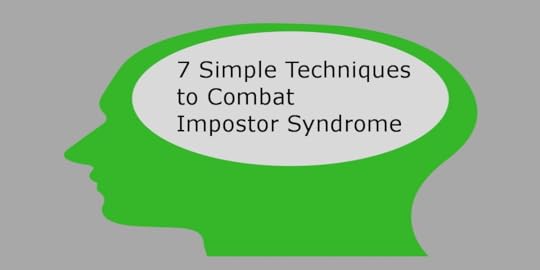 What is Impostor Syndrome (I.S.)?
What is Impostor Syndrome (I.S.)?
According to Wikipedia, the concept describes individuals who are marked by an inability to internalize their accomplishments and a persistent fear of being exposed as a “fraud”.
Basically, this is an irrational feeling that can affect our confidence in our abilities, even though we have the evidence that we are competent.
One of the core elements of this issue is confidence but that doesn’t equate to a total lack of confidence. You might presume that people with a constant fear of being exposed as a fraud would be unsuccessful.
The fact of the matter is that many high achievers still suffer from a certain level of belief that they are inadequate and incompetent, even though they have evidence to the contrary.
I am not a medical practitioner but as someone that has experienced various levels of Impostor syndrome (I.S.) for over fifty years, I would like to share with you some of the techniques that have worked for me.
1. Acknowledge Every Little Success
If one of the key elements of Impostor Syndrome is a lack of confidence, the best way to boost your confidence is to record your own successes.
When we are first born we have so much to learn, including the basics such as walking and talking. As adults, we take for granted a lot of the skills that we have achieved since birth.
Reviewing your daily successes and acknowledging your skills can start to build a base for your confidence
You can log your successes in a journal, but I would suggest that when you first start acknowledging your successes, there will be a lot to write.
Start by congratulating yourself with little daily successes, such as:
I have just made a cup of coffee because I have the skills to do so.
I have just knotted my shoe laces because I have the skills to do so.
I have just used the TV remote control because I have the skills to do so.
I have just opened a can with a can opener because I have the skills to do so.
I have just attached a document to an email because I have the skills to do so.
I have just opened an App on my phone because I have the skills to do so.
I know these simple skills might seem trivial at first but at some stage in your life you didn’t have these skills, so celebrate your achievements. Once you have focused on the smaller achievements for a day or two (or however long you choose), you can start to appreciate your larger achievements.
2. Practice Affirmation Statements
Positive Affirmation statements (usually shortened to either “Positive Affirmations” or just “Affirmations”) are widely accepted in the fields of mental health, to foster positive thoughts and reprogram your brain, to help you overcome negative thoughts.
The statements in the first technique are a type of affirmation. To maximize your results from affirmations here are a few recommendations:
Choose one negative thought (at a time) about yourself and write down the opposite.
Write the affirmation in the present tense (e.g. “I am a successful author”).
Make each affirmations short and easy to remember.
Limit your number of daily affirmations. Repetition is the key, so repeating the same affirmations over time will have more effect. You can always rotate your affirmations after a set time.
Write your affirmations down and keep them handy. We don’t always carry a pen and paper with us but as it is rare that we are without our phones, you can keep a copy of your affirmations on your phone.
3. Set Your Own Standards
Feeling like an impostor is partly because you are grading yourself against a set of standards.
Although a lot of successful people may say that they are driven by their own standards, those standards have not come out of thin air. Like a lot of our core traits, our standards are formed through our experiences and circumstances. Peer pressure and the need to fit in can play a big part in what we try to achieve and contribute to our own standards being formed.
If you identify what your standards are it is a lot easier to understand if they are being achieved.
By practicing a little self-examination, you can determine what success really looks like to you. Ignore the online Ads showing people in front of yachts, mansions, and other expensive toys, determine what you are trying to achieve and keep that benchmark in the front of your mind.
4. Accept your Learnings
Some people may frame their learnings as failures, but they are only failures if they don’t learn from them.
When we first learned to walk as a child we may have stumbled a few times, but we didn’t stop trying to walk just because we faltered, we adjusted how we walked.
Impostor Syndrome can be particularly present when you try something new, as there are lots of new learnings.
Choose to accept that life will not always be a smooth path. For any setbacks see them as learnings rather than dwelling on their initial results.
Look at what didn’t work and adjust your approach the next time.
5. Embrace the 80/20 Rule
One of the reasons that we feel like a fraud is that we try to excel at everything.
The 80 /20 rule (also known as Pareto’s Principle) assumes that in most situations, 80% of the results come from 20% of the activities.
This means that there is a good chance that a large percentage of our activities may not produce our desired results. Bearing that in mind realize that it doesn’t make you a failure not to achieve 100%.
Even though I am not a baseball player or a fan, one thing that has always amazed me is batting average statistics.
Batting averages are roughly the number of hits of the ball that a batter achieves (as calculated) out of 1000 attempts.
The highest batting average for a Major League Baseball player is 366 (366 out of 1000 attempts).
I think they choose 1000 because if we look at that as a percentage of 100, 366 is only 36.6%.
Considering that in certain circumstances a low success rate (such as less than 37% in Baseball) can make you the top of your game, you need to put things in perspective.
You may not always succeed with a 37% pass rate but you should now realize that you don’t always need to achieve 100% to be a success.
6. Surround Yourself with Supportive People
Self-talk is all well and good but one of the issues with I.S. is that we do not believe our own proof of success.
Confirmation by others can help overcome some of our own negative self-talk.
A few options for building your own support network are:
Seek out relevant groups (meeting either physically or online) and become active members of those groups.
Determine which members of your current circle of friends, family, and associates are supportive of your activities and share your successes with them.
Seek out an accountability partner (ensuring that they have the right supportive attributes) and commit to regular communications.
Reduce your exposure to negative unsupportive people in your network and increase your exposure to supportive environments.
Once you start seeking out supportive people, you will be surprised at how easily you will find them.
7. Laugh at Yourself
Once you accept that Impostor syndrome is not a rational decision it can help to laugh at yourself.
You are not actually laughing at yourself here but actually laughing at the absurdity of I.S. When you have evidence of your success but can’t accept it, isn’t that absurd?
Some people find this easiest to laugh in front of a mirror (Experiment with or without a mirror and continue with the option you find most comfortable).
Whenever you start to feel an onset of I.S. follow this procedure.
Stand in front of a mirror.
Look into your own eyes.
Force yourself to laugh.
If you have difficulty forcing laughter just repeat “HO, HO, HO, HEE, HEE, HEE”, a few times. You are in effect practicing laughter yoga at this stage and if the absurdity of I.S. doesn’t make you laugh, this activity should.
Although you might have to try this a couple of times to master this skill, the benefits of laughter are well documented and here it can also serve as a distraction from I.S.
Once laughter comes easier you may not need a mirror. If you find laughter more difficult later on, just the thought of this activity can minimize your feelings of I.S.
Final Thoughts
Impostor Syndrome is based on a negative thought process. We have developed this thought process due to an accumulation of inputs and circumstances in our life.
Replacing negative thoughts with positive thoughts may not quash Impostor syndrome for good but it can provide some respite from this issue.
If just one of these simple techniques has been beneficial to you, then continue to use it. Even if none of these techniques is beneficial to you then you have had a learning experience and can try different techniques in the future.
Here's some simple techniques to deal with Impostor Syndrome
Click To Tweet
The post 7 Simple Techniques to Combat Impostor Syndrome appeared first on "Author Ged" & His Book Marketing Services.
February 24, 2018
How to Market your Books with Amazon Samples
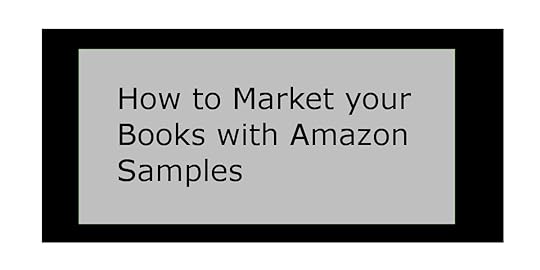 When you publish your book on Kindle, Amazon allows readers to download Free sample extracts of your book (Approximately 10% of the book’s content).
When you publish your book on Kindle, Amazon allows readers to download Free sample extracts of your book (Approximately 10% of the book’s content).
This is a great marketing tool and it’s FREE.
Issue
The traditional way for readers to get these samples is to go to your book’s listing on Amazon. The only drawback here is that readers have to be on your book’s page to get the sample. If you need to market your book, readers may not be automatically flocking to your book’s Amazon page.
Solution
Amazon has been kind enough to provide a function, to allow you to share that sample through social media (or on your website).
In the following example, I will take you through the simple steps to share your samples through Twitter:
1 Go to Your Book’s Amazon page
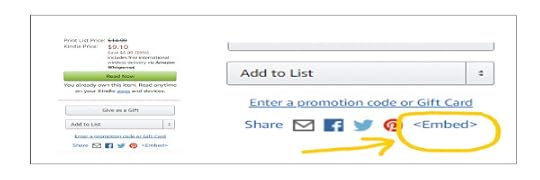 Click on the “ link under the buy box (the box that you click on in order to buy the book).
Click on the “ link under the buy box (the box that you click on in order to buy the book).
2 Copy the URL Link displayed in The Orange Box
Amazon kindly supply the code for you to copy, they put it in a nice orange box, so it is easy to see.
You can also copy and paste the HTML code into a page on your website, by clicking on the button next to the text “embed on your site (HTML)”.
3 Login to your Twitter account
Once you have logged into your twitter account you can paste the code directly into the Twitter text box.
4 Turn your Tweet into an Ad
Pasting the code into the (twitter) text box is like attaching a picture with no text, you need to add some text before the code.
Something as simple as “Try a Free sample of my book how to grow beans” is enough.
5 Send out your Tweet
The Code will automatically display your initial text and an image of (some or all of) the cover of the book.
6 Leave Twitter to do The Rest
When someone clicks on the tweet, it will automatically open up a sample of your book.
In the image above, you see an example of the view on a computer, but the display will match whatever device that readers are using to view their tweets (e.g. a smartphone).
With built-in features such as the orange “Buy” button, the sample even guides the reader towards buying your book.
Use Amazon Samples to Market your Books for FREE
Click To Tweet
Voila
You have just used Amazon’s free service to promote your Kindle book, with free samples of your book.
The post How to Market your Books with Amazon Samples appeared first on "Author Ged" & His Book Marketing Services.
February 18, 2018
How to Create Review Copies of Your Books for Kindle
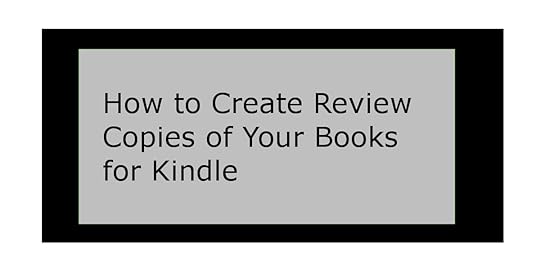 The percentage of Kindle Book readers is fast catching up with the percentage of Print Book readers. Sending out physical print copies of your book (as review copies) is, therefore, becoming less useful.
The percentage of Kindle Book readers is fast catching up with the percentage of Print Book readers. Sending out physical print copies of your book (as review copies) is, therefore, becoming less useful.
Indie authors are looking to optimize their budgets and the time and cost of posting out physical Print books makes this less than optimal.
A. How Books & Documents get to Kindles
When someone purchases a Kindle version of a book from Amazon, it is wirelessly delivered to their Kindle device.
Not everyone realizes that each device has its own email address (which can be found under the Device settings on their Amazon account).
Sending documents to that email account adds that document to their Kindle library so they can be viewed on that kindle (or Kindle Apps associated with it). This doesn’t, however, change the format of that document.
B. What are PDFs, Epubs and Mobis
Portable Document Format (PDF) is a file format that was developed in the 1990’s. The advantage of a PDF file over other document formats (such as an MS Word Docs) is that the formatting is locked in. Locking in the formatting of images and text in a document means that you know where the images and text are displayed on a page when someone opens a book or brochure.
Epub is an eBook format (with the extension “.epub”) that allows you the ability to download the book and read it on tablets, e-readers computers etc. Not used for Kindles
Mobi is an Epub type file that Amazon uses for the books that they distribute for their Kindle readers (and the Kindle App).
C. Option One Convert PDFs or other formats of your Book to Mobi
During the review process, some authors like to download a copy of their book in PDF format to allow them to review it on their computer.
As they already have a PDF of their book, they see it as an easy way to distribute free copies of their book (and may even have this file as a FREE download on their website).
Although you can view different formats of documents on your Kindle, they are not optimized to view and may not read as well.
One of the simplest ways of creating a mobi file from a PDF etc. is to use a free online converter (such as pdf2mobi.com).
Supplying your book in Mobi format can provide a better reading experience for your Kindle reader as it retains some of the features that a Kindle book has. A PDF document converted to mobi will not provide the same quality as a document originally created as a mobi file.
When I’ve converted other people’s books (from PDF format) to mobi, they haven’t fit correctly on the Kindle screen and the reading experience has been erratic.
D. Option Two Download a Mobi version of your Book from KDP
If you are publishing a kindle version of your book through Amazon, then you have access to a mobi copy of your book through the Kindle Direct Publishing (KDP) Platform.
Once you have a manuscript uploaded to KDP you can download it as a mobi file.
When you are logged into your KDP account you can choose to follow this process for any book from your bookshelf:
Click on the option to “Edit eBook content”
Scroll down to the section of the “Kindle eBook content” tab entitled “Kindle eBook Preview.
Click on either of the links “preview on your computer” or “preview on your Kindle device”
Click on the link titled “mobi”.
You will be given the option to save this file and you can choose where to save it (and under what name).
I tend to rename the file with the name of the book, the date of the download and that this is the kindle version of the book. As you start to publish and update your books it is important to have a filing system. To keep track of the various versions of your book.
NB. As you haven’t made any changes to your content, you can just click on the bookshelf link at the top of your KDP dashboard and exit the editing process (without having to complete the book submission process for that book.
E. You’ve done it
You now know what a mobi copy of your book is and why it is beneficial to have that version for Kindle Readers.
This means that your book is easily available to distribute for Kindle review copies.
You can choose to have this as a download on your website or email it to readers direct.
NB. As we are talking about Review copies here, ensure that your file has a review link to the review page for your book.
The post How to Create Review Copies of Your Books for Kindle appeared first on "Author Ged" & His Book Marketing Services.
February 4, 2018
How to Get More Amazon Book Reviews with Review Links
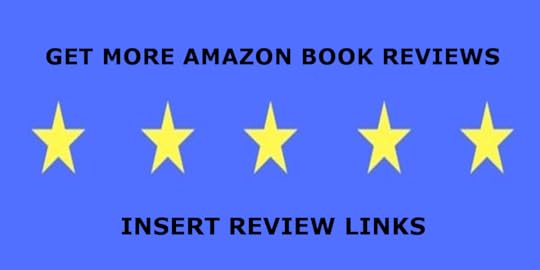 Self-Published or Independent (Indie) authors are constantly asking this question: How do I get more reviews, for my book on Amazon?
Self-Published or Independent (Indie) authors are constantly asking this question: How do I get more reviews, for my book on Amazon?
The first thing to note is that your book is a product, and Amazon has designed their algorithm to put products in front of their customers, that they are most likely to want to buy.
Product reviews are a factor in the algorithms calculation but also a psychological factor in customer purchasing.
A majority of humans prefer not to be the first to try something, if they see that a product has no reviews, they perceive that they are one of the first customers and so they are less likely to buy it.
It’s a Numbers Game
Whatever process or strategy you adopt, to get more reviews for your book, it is a numbers game.
Results will vary but from my own experience and those of fellow authors (I communicate with), the average number of book buyers that leave a review, is somewhere between 0.5% to 2.5%
Personally, I’d say that the 2.5% may be a bit on the high side, so whatever you can do to increase the conversion rate from reader to reviewer should be considered.
Why wouldn’t you want to improve the odds of readers leaving you a review?
Make it Easy to Post Reviews
As an indie author myself, I know the importance of reviews but even I don’t review every book I read.
With our ever-diminishing attention span, statistics show that where someone has to click twice to make a purchase or navigate elsewhere online (that second click is enough that), they are more likely to abandon the journey.
Basically, humans are getting lazier!
One of the benefits that a Kindle book has over a physical product, is that you can actually ask nicely for a review within the book (product) and create a link directly to your books review page.
Remember that the purpose of this link is to make it easier for readers to leave a review.
Getting readers to login to Amazon and find their order and then place a review can seem like too much trouble, for even the most ardent fan. Doesn’t it make sense to have a link that they can click on, while they’re reading your book, taking them straight to that books review page?
Here’s an example Link for one of my books “Gratitude For Happiness” – Gratitude review link
Your Link Needs to Be Universal
Your Kindle book is sold on multiple Amazon sites such as Amazon.co.uk or Amazon.co.au, as well as Amazon.com. You need to ensure that the link in your Kindle book, takes the reader to the Amazon platform where they purchased it.
Lots of Authors create international links to direct buyers to the book on their local Amazon site. Free tools, on sites such as booklinker.net make it simple for even technologically challenged authors. There are other free tools out there that will allow you to create a universal link to your books actual review page.
There are various tools out there to create a link, but one of the easiest ways is to copy and paste your books ASIN (Amazon Standard Identification Number) into a Free tool provided on Russel Phillips UK Site Click Here
Create Your Listing then Upload an Updated Manuscript
You need your book to be live on Amazon before you can create your link, which means that once the book has passed through the review process, you will have to upload an updated version of your manuscript with the link included.
Rather than have to worry about lots of reformatting of your book content, I’ve found the easiest way to add your link is by already having the text in the initial upload.
Basically, include the words “Please Click Here to Review this book” (or something similar and once you have created the review link you can turn the same text into a hyperlink.
For Pre-orders, your book listing will be live but the review page won’t be active until the book is live. Remember to upload the updated manuscript ASAP after it’s live.
Increase Your Odds of Book Reviews, With a Review Link
Click To Tweet
Don’t Break Amazons Terms of Service
With all the stories out authors having reviews stripped from their book listing and worries about Amazon stopping your book listing, authors can become paranoid about asking for reviews.
It can be quite confusing trying not to break the rules, rather than try to list all of the terms here, here’s a link to a video (provided by Dave Chesson) which provides some important guidance. Amazons Terms of Service Link
The Key Points
Once your book is live, create a link to its Amazon Review Page.
Ensure the link is universal and add it to the text in your manuscript as a hyperlink.
Upload your updated manuscript as soon as possible.
The post How to Get More Amazon Book Reviews with Review Links appeared first on "Author Ged" and his Freelance Writing Services.
January 2, 2018
3 Steps to Success by Controlling your Emotional Inputs
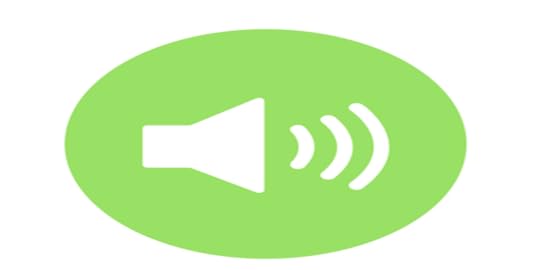 Your Daily inputs can have a major influence on your state of mind and ultimately your success. Young adults now spend over 5 hours a day on their smartphones!
Your Daily inputs can have a major influence on your state of mind and ultimately your success. Young adults now spend over 5 hours a day on their smartphones!
If you want to succeed in life you need to take note of your emotional inputs and optimize their impacts.
1 List Your Inputs
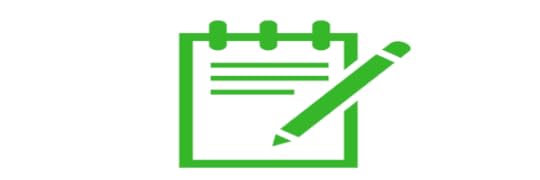 Before you can optimize the inputs that you are consuming (on a daily basis), you need to take stock of what they are.
Before you can optimize the inputs that you are consuming (on a daily basis), you need to take stock of what they are.
The main inputs to your emotional well-being can come from three main directions:
Things that you see – This can range from binge-watching Netflix or looking at your twitter feed, to even the books and magazines that you read.
Things that you hear – This can range from the music and types of radio that you consume to even your own Self-Talk.
The People that you interact with – This can range from your family members, work colleagues or even the trolls on social media.
Open a table in google docs, MS Excel or whatever medium you prefer and list all of the inputs that you receive over a week.
2 Categorize Your List
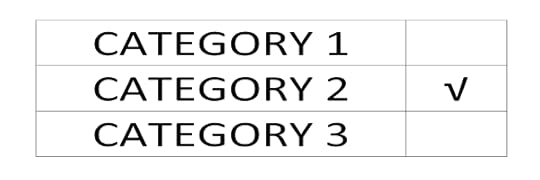 Ideally, you should be able to say whether an input has a positive or negative impact on you. There will be some inputs that have the potential for both.
Ideally, you should be able to say whether an input has a positive or negative impact on you. There will be some inputs that have the potential for both.
Positive – Although we are all different there will be some common inputs that are predominantly positive. It would be uncommon for an activity such as listening to a guided meditation audio would have a negative impact on the listener.
Negative – Watching an episode of “The Walking Dead” may seem like an obvious entry in the negative category but if you are a horror writer, this might be required for research.
Both – Certain inputs have the potential for both negative and positive impacts on our emotional wellbeing. Self-Talk can be either positive or negative depending on your perspective.
Categorize your list from Step one and identify what type of emotional impact these inputs are having on you.
3 Balance Your Inputs
 Once you have identified which inputs have negative or positive impacts on you (emotionally), you can take action to balance those inputs to help you succeed.
Once you have identified which inputs have negative or positive impacts on you (emotionally), you can take action to balance those inputs to help you succeed.
Maximize – For inputs that are having a positive impact on you emotionally, you want to maximize these benefits. If 5 minutes meditation a day is enhancing your daily life, why not increase this to 10, 20 or even 30 minutes a day?
Minimize – For inputs that are having a negative impact on you emotionally, you want to minimize your exposure to them. A toxic work colleague may be hard to avoid in your workplace but you can decide not to socialize with them.
Prioritize – For inputs that have both a positive or negative potential impact, prioritize the positive impacts. If your self-Talk is both positive and negative, concentrate on the positive talk and prioritize that part of your relationship with yourself.
Balance the Emotional Impacts of Your Inputs!
Click To Tweet
Final Thoughts
The concepts in this article are fairly straightforward, to ensure that you get the most out of this process, I want to emphasize the three simple steps:
Take Stock of all of your emotional inputs.
Categorize them into Positive, Negative or Both.
Balance their impacts, by maximizing the Positives and minimizing the Negatives.
It really is as simple as that!
The post 3 Steps to Success by Controlling your Emotional Inputs appeared first on "Author Ged" and his Freelance Writing Services.
December 28, 2017
How to Write Your Kindle Book Description for More Sales
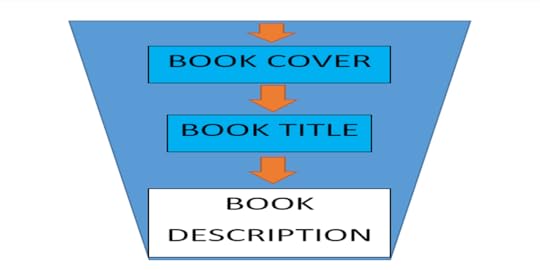 Once you have caught a reader’s attention with your Book’s cover and your Book’s title, you need to keep them engaged with your Book’s description (often referred to as your product listing).
Once you have caught a reader’s attention with your Book’s cover and your Book’s title, you need to keep them engaged with your Book’s description (often referred to as your product listing).
Your book description is a critical step in your sales funnel and is not just an excerpt from your book.
Your Book Description is a Key Element, in the Sales Funnel of Your Kindle Book.
Click To Tweet
1. Choosing the Correct Genre
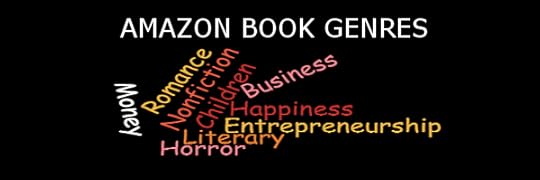 Readers may find your book through a keyword search but they may also search via book genre.
Readers may find your book through a keyword search but they may also search via book genre.
If someone types in “Top Romance books” in the Amazon’s search box, you better ensure that your Romance book is listed in the Romance genre.
Amazon restricts the number of categories that you can list your book under to two separate categories.
There are lots of book categories and sub-categories and with only two to choose from it can be confusing.
One of the easiest ways to choose the correct category for your book, is to check out which categories similar books are listed under on Amazon. List your book under the same categories as your competitors.
Ensure that you are looking at the listing for the Kindle version of your competitor’s books as there are different category options for print copies.
2. Copywriting
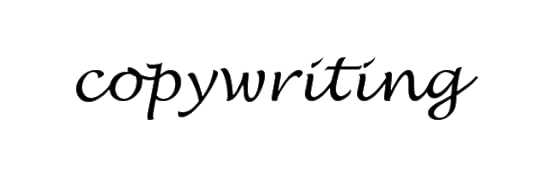 If you are a best-selling author (such as Stephen King or J.K. Rowling) you could probably publish your shopping list and not need much advertising but most authors aren’t that lucky.
If you are a best-selling author (such as Stephen King or J.K. Rowling) you could probably publish your shopping list and not need much advertising but most authors aren’t that lucky.
As we have already mentioned your book description is not just a few lines from your book. This is your chance to sell your book and should be treated the same as any other promotional copywriting.
Some elements to consider:
Bold Headings: This draws the reader’s attention.
Bold Sub-headings: This continues to retain the reader’s attention.
Plenty of White space: This will make the description easier to read on various devices.
Bullet points and numbering: This will make the description easier to read on various devices.
A Call to action: At the end of the description you want to emphasize why readers should buy your book.
3. Formatting with Hyper Text Markup Language (HTML)
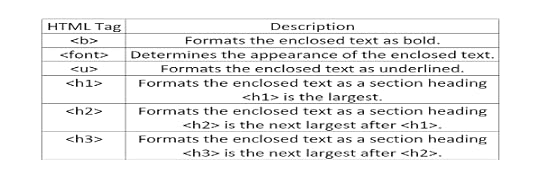 HTML is one of the computer codes that formats the way text is viewed online.
HTML is one of the computer codes that formats the way text is viewed online.
Unless you use HTML for your Amazon listing, the words will appear as basic unformatted text (this can make it seem bland and unappealing).
Amazon allows you to use certain HTML Tags
If like me you have no computer coding experience, it can seem a little daunting that you’ll have to learn to code.
Fear not as luckily there are (free) online tools that automatically create the code for you.
If you can use a basic word processor to format text, you can work with one of these code generators.
I highly recommend Dave Chesson’s Code Generator over at the Kindlepreneur.com.
Once the code has been created you can cut and paste it straight into the description box for your book on the Kindle Direct Publishing (KDP) website.
If you also publish a print version of your book on Amazon using Createspace.com, you can paste the exact same code into the description box there. This will mean that your digital and physical listings will both match on Amazon.
Wrapping it all up
The first three steps in your book Sales Funnel are engaging potential readers with:
Your book Cover.
Your book title.
Your book description.
You need to list your book in the right category to ensure help readers find the book.
Your book description is not just a “cut and paste” of some of your book’s content but should be treated as an advertisement with attention to Copywriting.
Formatting the words of your book description with HTML will make it more engaging.
If you can maintain a reader’s engagement, there is more chance that they will purchase your book.
The post How to Write Your Kindle Book Description for More Sales appeared first on "Author Ged" and his Freelance Writing Services.
December 27, 2017
How to Sell More Kindle Books with Stunning Book Titles
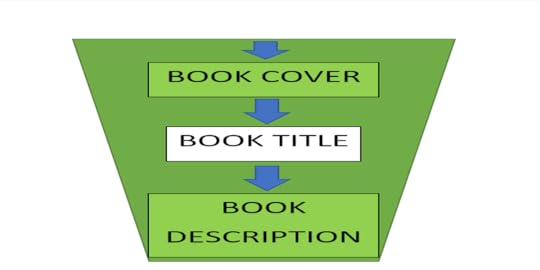 Do you really want your Kindle book to sell?
Do you really want your Kindle book to sell?
If your book cover is lucky enough to catch a reader’s attention, what is the next key element to keep them engaged?
The title of your book is one of the key elements of your book’s sales funnel.
The purpose of your book title is to peak the reader’s interest and help them make a decision, that your book is going to meet their requirements.
Your Book Title is a Key Element, in the Sales Funnel of Your Kindle Book.
Click To Tweet
1. How Do You Start to Choose a Book Title?
 Most Non-Fiction books are written to solve a problem for the reader. If a book is about making $30,000 in 30 days the title can seem to write itself.
Most Non-Fiction books are written to solve a problem for the reader. If a book is about making $30,000 in 30 days the title can seem to write itself.
For Fiction it is good to choose a book title that matches the genre.
One of the easier ways to start is to use an online book title generator.
You can find title generators for most genres of books (by simply typing “book title generator” into google).
Here a few links to a variety of Title generators out there:
Random Fantasy Novel Generator
Random Western Title Generator
Random Romantic Book Title Generator
Mystery Title Generator
Science Fiction Title Generator
2. How Will Readers Find Your Book?
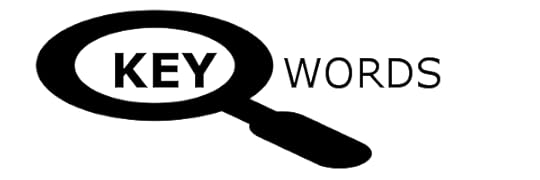 Some books may be found by using a genre search, i.e. a reader may search for “romance” or “western” in Amazon’s book section.
Some books may be found by using a genre search, i.e. a reader may search for “romance” or “western” in Amazon’s book section.
Most Non-Fiction (and any remaining Fiction) book titles are found via the answers from a keyword search.
If a reader wants a book on how to make a million dollars, they may just type in “how to make a million dollars”.
The Words in your book title are therefore relevant to matching up with the words that readers use in their searches. Amazon’s system uses an algorithm (a set of mathematical formulas) to determine which book titles show up in each search.
Keywords Optimization
You need to remember that your book title is not just a collection of keywords. Calling your book “Gold, Finance, Money, Investments” may seem logical if you want it to show up in keyword searches but if it did show up it would make little sense to a reader.
For Non-Fiction Books there is a tendency just to create a book title that explains the subject of the book e.g. “How to Make $30,000 In Property Investing”.
There are various tools out there (including Merchantwords) that allow you to analyze the relevance of keywords in searches.
Short (One or Two Word) main book titles can be catchy and allow a large Font to ensure it can be read in a small thumbnail image.
Short titles have the disadvantage of not explaining what the book is actually about. It is therefore beneficial to include a longer sub-title to supplement a short main title.
Sub-titles can help you in several ways:
They explain the meaning of a short main book title.
They allow you to include more keywords in a book’s title.
3. How Will Readers View Your Book Title?
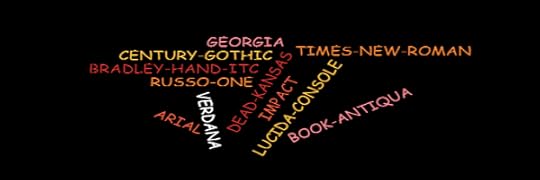 Book searches on a kindle mean that your book cover is being viewed as a small black and white, thumbnail image.
Book searches on a kindle mean that your book cover is being viewed as a small black and white, thumbnail image.
Minimizing the number of words in your books main title may make it more legible in a smaller image but this also dependent on the font of the text.
A Font such as LUCIDA HANDWRITING may look arty on a large book image but becomes harder to read when viewed in a reduced size. Some Fonts have specific licensing rules so ensure that you check this out before using non-standard fonts for your book title.
Cleaner square Fonts such as TIMES NEW ROMAN or GEORGIA can be a better option.
Having the main title in a large font (to draw attention) and a sub-title in a smaller font, needs to be balanced against the legibility of the smaller fonts when shrunk down.
Experiment with the Title and subtitle sizes in a simple MS Word document can give you an idea of how the title will be viewed. Just reducing the size of the documents display on the screen will provide you some basic guidance.
The Final Words
The first three steps in your book Sales Funnel are engaging potential readers with:
Your Book Cover.
Your Book Title.
Your Book Description.
Your book title is one of the key elements of your book’s sales funnel.
It needs to attract the reader’s attention but also be optimized to get the most out of Amazon’s algorithm.
If you can maintain a reader’s engagement, there is more chance that they will purchase your book.
The post How to Sell More Kindle Books with Stunning Book Titles appeared first on "Author Ged" and his Freelance Writing Services.
December 26, 2017
How to Sell More Kindle Books with an Amazing Book Cover
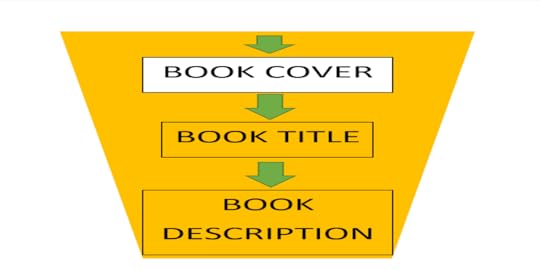 Do you know the first thing that attracts readers to your books?
Do you know the first thing that attracts readers to your books?
Your book cover is the first element of your book to catch a reader’s attention!
Unlike traditional (bricks and mortar) bookshops, that allow readers to touch and feel the book, you only have a small window of opportunity, to engage your kindle reader visually.
Your Book Cover is a Key Element, in the Sales Funnel of Your Kindle Book.
Click To Tweet
1. Check Out Your Competitor’s Book Covers
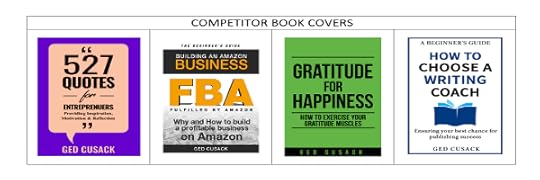 We all like to think that our work is unique but whether you are writing in the “Science Fiction, Fantasy” genre or the “Personal finance” Niche, there will be some common elements in those book covers.
We all like to think that our work is unique but whether you are writing in the “Science Fiction, Fantasy” genre or the “Personal finance” Niche, there will be some common elements in those book covers.
By matching your book cover to your genre, it helps readers know (at a glance) that your book corresponds to the type of book that they are looking for.
Look at the top selling books in your genre. Typing in a search term such as “top 100 Science Fiction books” will help you to identify those books.
If you’re unsure what kind of common elements you find in genres, here are a few examples:
Romance books tend to have at least one image of a male torso on the cover and in lots of cases an image of a male and a female in a passionate embrace.
Western books tend to have images of cowboys and horses on the front cover.
Finance Books tend to have images of currencies, charts or numbers on the cover.
2. Enhance The Colours and Contrast of Your Cover
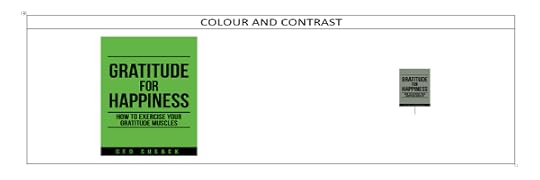 If you have a book about a Red Dragon, you want the image of the dragon on your book cover to be red. If your book is about a yellow car, you want the image of the car to be yellow. Those statements may seem obvious but the colour of your book cover is not just about matching the book’s subject.
If you have a book about a Red Dragon, you want the image of the dragon on your book cover to be red. If your book is about a yellow car, you want the image of the car to be yellow. Those statements may seem obvious but the colour of your book cover is not just about matching the book’s subject.
It is widely accepted that there are psychological effects and emotions that different colours solicit.
Rather than disappear down the rabbit hole of the emotional effects of colours, we are going to focus on the basic contrast of colours in their black and white format.
As a high percentage of Kindle readers are now purchasing books on their Kindles. Book searches on a kindle mean that your book cover is being viewed as a small black and white thumbnail image.
Most photo or image viewing software gives you the option of viewing your image in greyscale so use that simple option and then minimize the image of your book cover to around one to two inches.
Determine how easy it is to determine what your book is about in this grey scale format?
3. Develop Detailed Briefing Notes for Designers
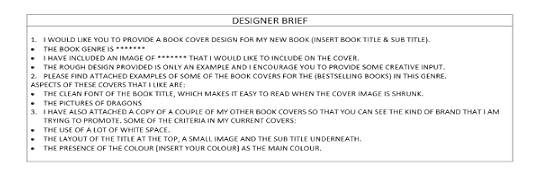 Unless you are using a traditional publishing company, the ultimate design of your book cover will be determined by you.
Unless you are using a traditional publishing company, the ultimate design of your book cover will be determined by you.
Lots of design work is now done by online Virtual Assistants (V.A.s)
Whether you choose to contract one of the many book cover designers on a site like Fiverr or you pay a premium fee for a designer, you are the one making the final decision.
To ensure that your book cover meets your needs you need to be specific in your brief to designers:
Designers must ensure that any images that they use are royalty free.
If you want a specific Font let them know (there can also be a royalty licensing issue here).
If you are going to use colours as part of your brand (as Robert Kiyosaki did with his Black & Purple for Rich Dad / Poor Dad), ensure that you tell them exactly what colours you want (specific colours have a specific colour code).
Book Cover Wrap Up
The first three steps in your book Sales Funnel are engaging potential readers with:
Your Book Cover.
Your Book Title.
Your Book Description.
Your book cover is a key element of your book’s sales funnel!
With more and more Kindle readers buying their books on their devices, you need to ensure that your book cover is engaging even in a black and white thumbnail image.
When you task someone to design your book cover, you must ensure that you provide detailed instructions.
If you can maintain a reader’s engagement, there is more chance that they will purchase your book.
The post How to Sell More Kindle Books with an Amazing Book Cover appeared first on "Author Ged" and his Freelance Writing Services.

